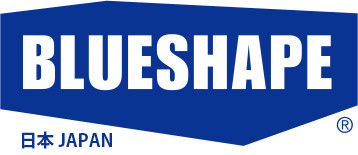Recycling portable rechargeable batteries
Protecting the limited resources
The movement to recycle portable rechargeable batteries was begun in April, 2001, with the founding and opening of the portable secondary battery recycling promotion center based on the Law for Promotion of Effective Utilization of Resources, within the Battery Association of Japan (BAJ). The center is organized by members of the portable rechargeable battery manufacturers, companies producing equipment using these batteries and the importers of both, and companies mandated to collect and recycle portable rechargeable batteries.
In April, 2004, the center was split off from the BAJ to expand its operations and became the Japan Portable Rechargeable Battery Recycling Center (JBRC), an independent limited liability intermediate corporation, while with the abolition of the designation "intermediate corporation," the center became an incorporated association in June, 2009.
The JBRC promotes the free collection and recycling of portable rechargeable batteries sold by the members, from nationwide collection points (recycling supporting retailers, local governments, and business organizations) registered with the JBRC.
Rechargeable batteries are being collected and recycled. Please cooperate with this activity.
This recycle mark was prescribed by the Law for Promotion of Effective Utilization of Resources, and the arrow theme of this mark symbolizes the plea to recycle in order to effectively reuse the scares resources. This mark is printed on rechargeable batteries and their recycle boxes.
Many rechargeable batteries are used in the form of battery packs, which are plastic cases holding more than one battery. The batteries used in headphone stereos, Mini-4WD remote controlled cars, digital cameras, and other devices look like single cell batteries, but these batteries all carry the recycle mark and so can be distinguished from other batteries.
Rechargeable batteries primarily use nickel (Ni) and cadmium (Cd), cobalt (Co), lead (Pb) and other rare resources. Recycling is an effective means of reusing such rare resources without waste. Examples of this are the use of nickel and iron alloy in stainless steel, and the use of cadmium in making new Ni-Cd batteries. Please cooperate with recycling the used rechargeable batteries to make the most of rare resources.
At home, bring used portable rechargeable batteries to recycling support retailers. For businesses with used portable rechargeable batteries, the JBRC will collect the batteries free of charge (requires registration with a collection point, certain conditions apply).
Nickel-metal hydride (Ni-MH) battery
In place of the cadmium negative electrode of the Ni-Cd battery, a hydrogen-absorbing alloy that absorbs and releases active materials such as hydrogen is used as the negative electrode. It is a sealed alkaline storage battery, and it has a higher energy density than an Ni-Cd battery.
As with Ni-Cd batteries, rare natural resources such as nickel can be recovered from recycled Ni-MH batteries.
Uses of portable rechargeable batteries
Nickel-cadmium (Ni-Cd) battery
A nickel-cadmium battery is a sealed alkaline storage battery with a nickel positive electrode and a cadmium negative electrode, and it is in the group of secondary batteries that can be recharged and reused many times. A nickel-cadmium battery is economical because it can be recharged and discharged more than 500 times, but they do have a limited useful life. Precious natural resources such as nickel and cadmium can be recovered from recycled nickel-cadmium batteries. Today, recycling nickel-cadmium batteries is strongly recommended for the effective utilization and reuse of natural resources.
